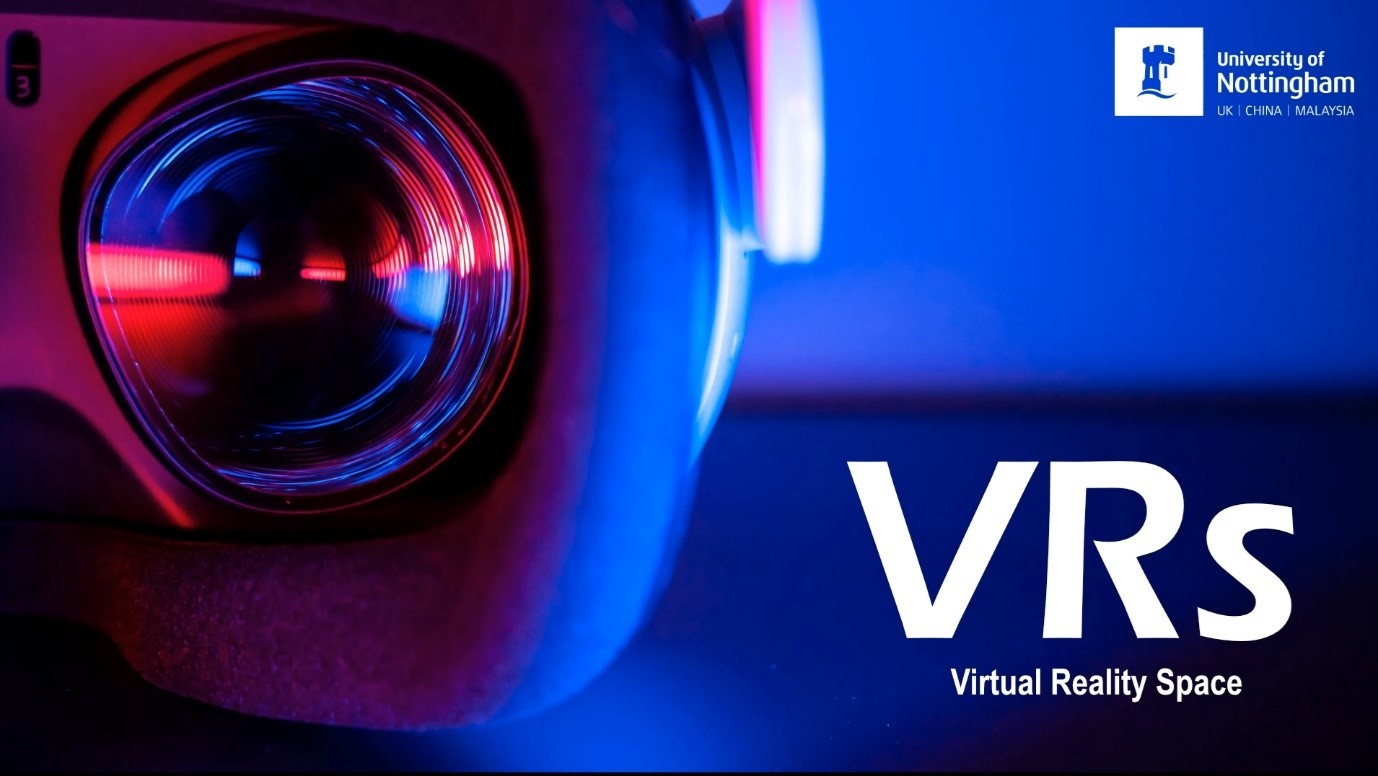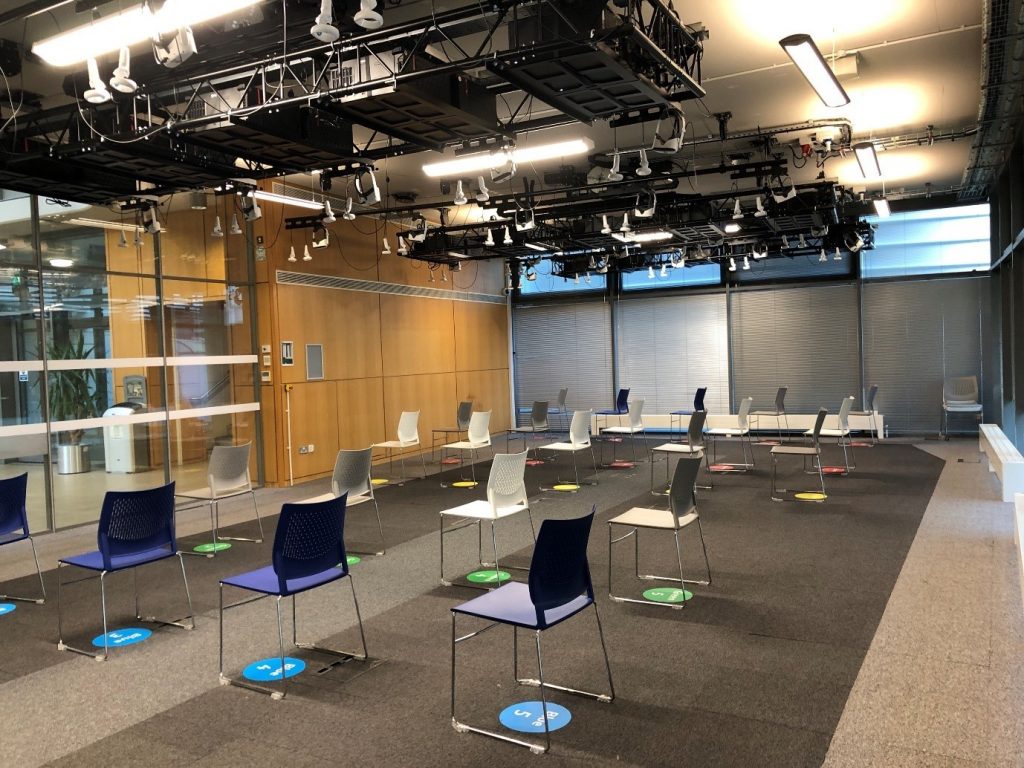
February 2, 2024, by Laura Nicholson
Engineering Faculty Takeover: Engineering Virtual Reality Space
Throughout the 2023–4 academic year, we are running a new feature on the Learning Technology (LT) blog: a faculty takeover month! Each month, we will feature posts from different faculty members at the university. Every Friday, posts will highlight interesting work and ideas related to technology in teaching and learning and showcase unique projects from within the various disciplines across the UoN. So far, we have promoted the work of the Faculties of Science, Medicine and Health Sciences, and Arts. This month, we welcome posts from the Faculty of Engineering.
This week, Simon Harrison, Associate Professor in Engineering and Digital Learning Director for the Faculty of Engineering, writes about the new Virtual Reality space (VRS). The space comes fully equipped with an amazing 40 VR headsets, providing new opportunities to transform teaching and learning experiences across the University.
Author: Simon Harrison
This first blog comes at a good time for me, as I’m just launching Engineering Virtual Reality (VR) Space, and here is a chance for me to tell you a little bit about it. Virtual reality offers so much more than a place for immersive fun or virtual chat rooms; when you use it seriously, it can be game-changing.
Think about Engineers; We make things. When we design these things, we use 2-dimensional tools like drawings or computer screens to create 3-dimensional objects. Surely, there have got to be problems with that. Now what about if we use 3-dimensional tools to design 3-dimensional objects?
This is what more and more Engineers in industry have been doing in recent years. Using VR to improve the design process and communicate its end results more quickly.
We started teaching some of our students to use VR headsets and VR software two years ago. We teach them to draw and design in virtual space and to evaluate their designs actual size without having to physically make them. Not surprisingly, they love it and can really see how to take advantage of these new tools.
Overcoming challenges
For me, it has been the hardest thing to teach that I have ever had to do in my 20 years at the university. Why? You might think it’s just another computer-based class or a practical lab, and it is. But it is one where you cannot see what the students are doing! If the student has a problem and needs help, it becomes a game of whether it can be described and can the description be understood? It nearly always ended up with me asking if I could have a look through their headset. Not a good way to teach!
My little test of seven headsets worked well but was never going to be enough for the larger class sizes in engineering. We had to scale it up and make it easier to teach.
That’s what I have been doing for the last year, and now it’s ready.
Feedback
We have been running a few taster sessions for staff and students within Engineering in January. Testing our 40-seater VR classroom. The room is reconfigurable, so we don’t have to just teach VR in there. The headsets and PCs are on the ceiling and can be lowered when needed; it’s very cool. It’s set up so that we can remotely see what the students see in their headsets, and then we can direct them individually via microphones and headphones. All this and another 90 headsets to loan out to students for project work.
We didn’t set out to do it, but we have created one of the best VR facilities in the world; there is nothing else like it at any other university that we know of.
It’s been fun running the taster sessions; we have had nothing but great reactions. Liz Dinneen, Learning Technology Officer, Faculty of Engineering, has been kind enough to share her experience of attending one of the taster sessions, providing us with a firsthand experience of the new VR space.
Over to Liz…
Simon clearly explained the VR headset set-up instructions that were illustrated on the large screen at the front of the room, which made the set-up process easy. Once the headset was on, I was in a room with a garden area and a set of apps displayed on a wall. I selected a design app to get a sense of the student experience.
It didn’t take long to familiarise myself with the tools and how to adapt them. I think the greatest challenge was to not use perspective in my drawing, as you can change the perspective with your hands by grabbing and moving any object. That was amazing to be able to do, and I can see how useful this will be. As Simon mentioned at the beginning of the session, students will be able to design from within an object, which I found most impressive. After a bit of playing around with that (I would need a bit more practice to create anything decent), I returned to the garden and relaxed, looking at a lovely mountain view with butterflies landing on my hands. It was a very pleasant and interesting experience all round. I would quite like to be an engineering student myself if this is how they learn and create. (Liz Dinneen)
Claire Chambers, Learning Technology Consultant for Engineering, also enjoyed a visit to the VR space and shares her reflections too.
Over to Claire…
I went along to one of the taster sessions and, having set up my headset, was intrigued by the ability to explore anywhere on earth in VR using Google Earth. I went to Yellowstone, New York, Beijing, and even visited my brother in San Jose, California. The detail is absolutely breathtaking, and I can see so many opportunities for this facility in teaching. Anything expensive, dangerous, or just too difficult to do in the real world with our students can be done using this amazing VR suite. I’m looking forward to exploring what we can do working in collaboration with colleagues. (Claire Chambers)
Would you like to use the VR space?
The VR space is not just for the Faculty of Engineering; it is open to any faculty in the University. Simon is interested in how you think you could use VR in your subject areas. Please use this Microsoft Form to leave your details, and he’ll be in touch.
No comments yet, fill out a comment to be the first


Leave a Reply